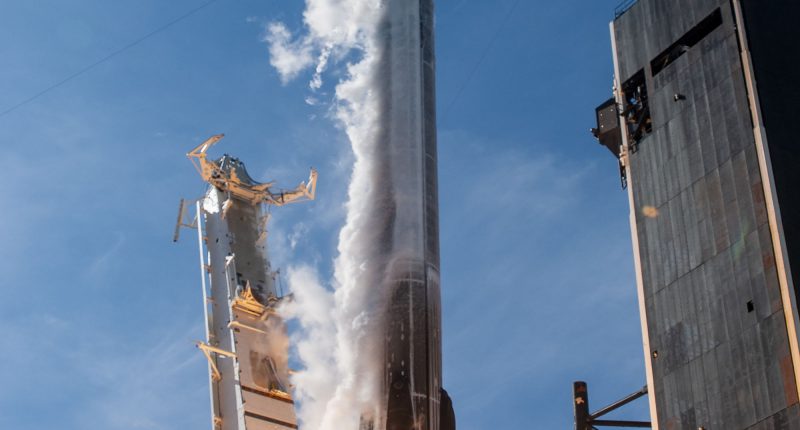SpaceX is sparing no expenses in its conquest of space. Last week, it had raised $1.16 billion to continue its space programs, and a few days ago, it bagged a $2.9 billion deal that will enable it to send mankind to the moon. However, not all is sunshine and roses for Elon Musk’s company, as it hit a snag after unfavorable weather conditions forced the launch of the Crew-2 mission to be delayed by 24 hours.
Four astronauts aboard a SpaceX Crew Dragon capsule and Falcon 9 rocket were scheduled to take to the skies today from NASA’s Kennedy Space Centre in Florida. The goal was to reach the International Space Station – but poor weather conditions along the flight path forced a delay.
“I’m sure you heard that you probably heard we’re going to have to delay a day,” NASA’s Bob Cabana, Kennedy Space Center director, said in a morning briefing. “We are not going to be able to launch tomorrow morning.” He added, “Although the weather is probably going to look great here at the launch site, we’re worried about the downrange wind and wave heights in case of an abort.”
Should the launch happen without further delay, the passengers aboard the Crew Dragon – NASA astronauts Shane Kimbrough and Megan McArthur, European Space Agency astronaut Thomas Pesquet and Japanese Aerospace Exploration Agency astronaut Akihiko Hoshide – will be reunited with the crew members of the Crew-1 Mission, who will return home on April 28. The members of Crew-2 will remain six months aboard the ISS to conduct experiments and maintenance.
Apart from the obvious danger inclement weather poses during a rocket’s take-off, it would also blotch rescue attempts due to high seas and winds. Drone ships like “Of Course I Still Love You” require favorable conditions for recovering booster rockets released by the Falcon 9 rocket.
On Thursday, the weather around the Kennedy Space Centre cast odds of 80% in favor of liftoff, the forecast of inclement weather along the planned path of the flight made NASA and SpaceX’s teams play it safe for the time being.
However, Crew Dragon is able of taking care of itself in case of an emergency – it is equipped with SuperDraco rockets which will propel the crew to safety in case of an emergency during ascent. “We have to worry about the entire ascent trajectory because if something goes wrong, we want Dragon to be able to launch-escape off the rocket,” said Benji Reed, SpaceX’s director of human spaceflight. “That means they will have to be able to come down in the ocean at all points along that escape path.”
According to Space Force’s 45th Weather Squadron, weather conditions were expected to improve to 90% in favor of liftoff. If all goes well, Falcon 9’s first stage will land just northeast of Florida and will be recovered by a drone ship. The rocket will then reach the International Space Station at 9:10 am GMT on Saturday.
A successful launch without further hitches – and a feather in Elon’s cap – might just be on the cards.
